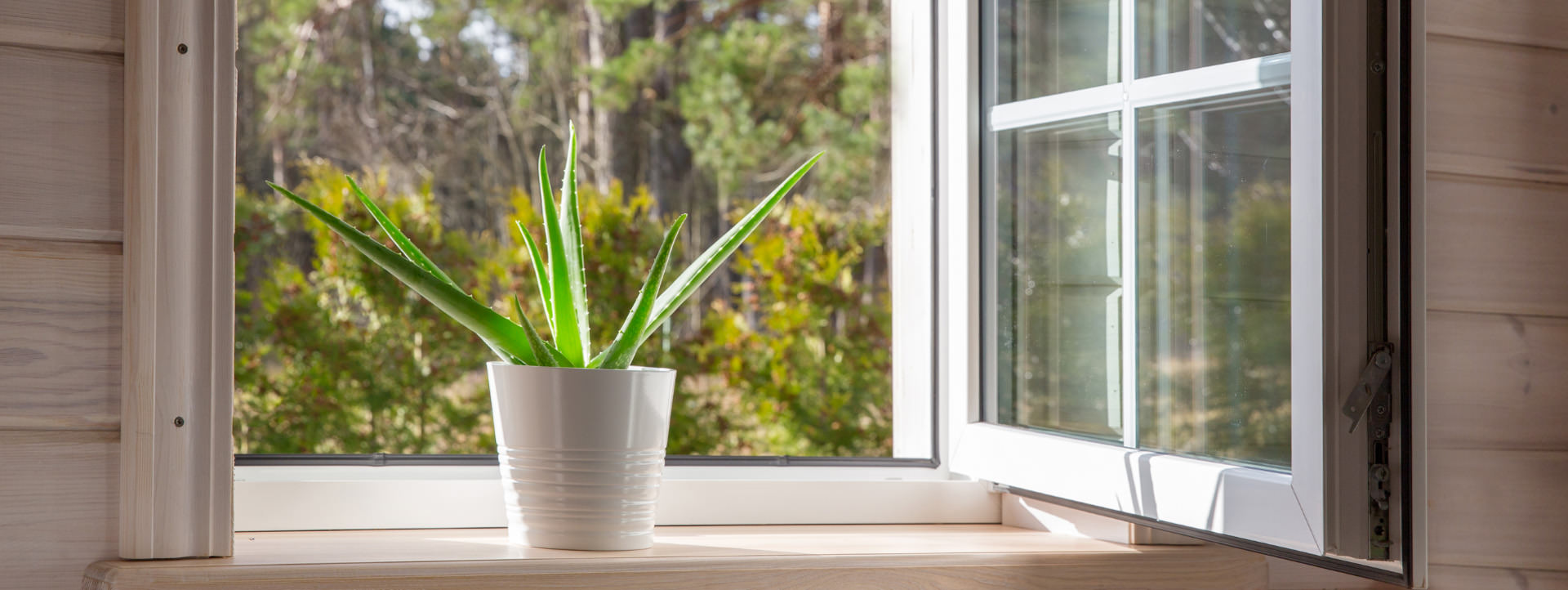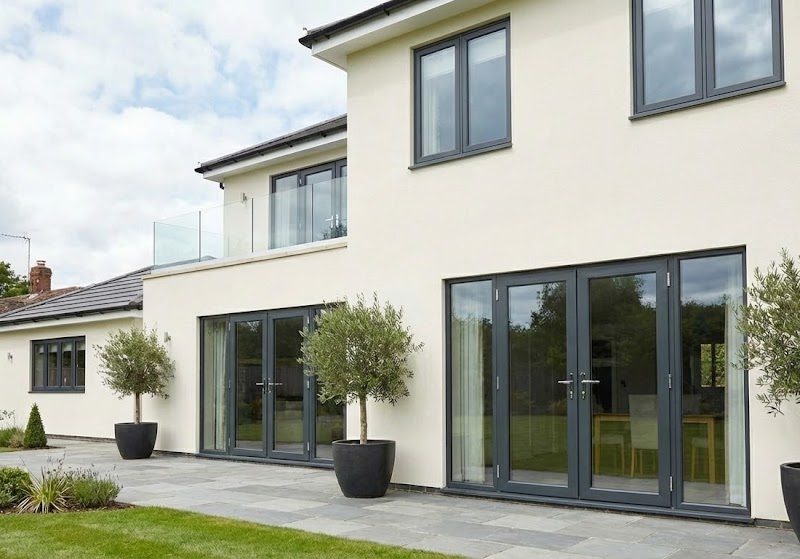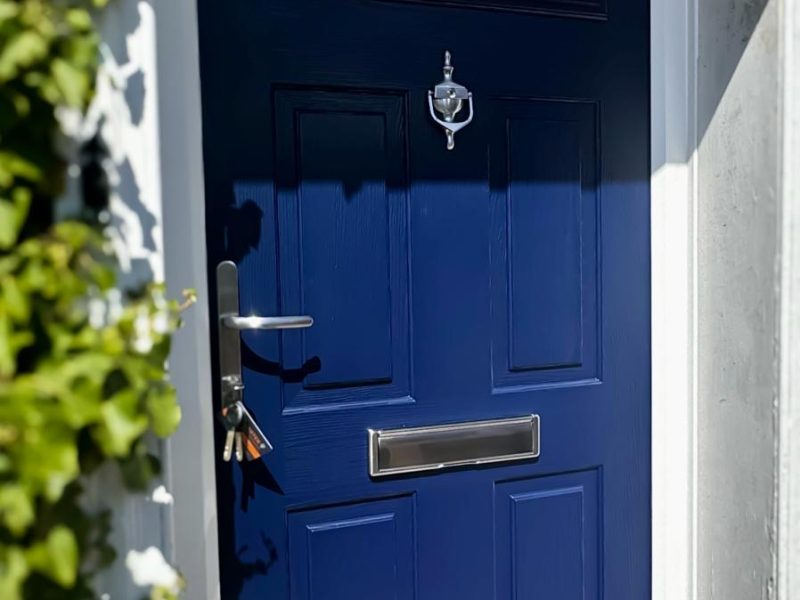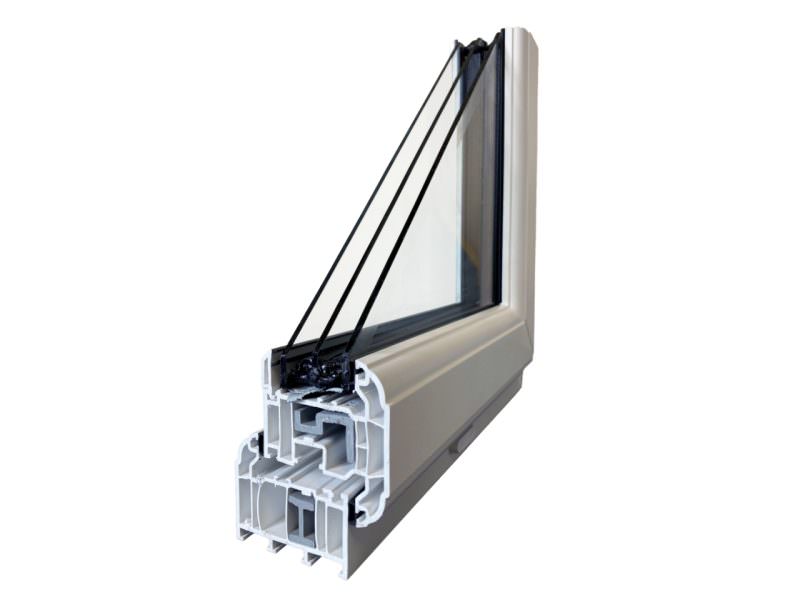
Timber - PVC - Aluminium - Windows, Doors & Conservatories in Hampshire
What to look for in a high security door?
What to look for in a high security door?
What makes a door secure?
There can be big differences in performance between two doors, which at face value appear to be more or less the same. This can impact on how good at insulating your home they are, weather sealing and security.
Door security is the product of a number of factors. This includes the framing material, the performance of the door leaf or glass specification and how the door sash (the opening part) is secured to the outer frame.
High performance composite doors feature a tough attack resistant skin, frame and insulated core. Security glass used in high security glazed entrance doors, French doors and bi-folding doors, have a special laminated inter-layer, which even if smashed, holds the glass together making forced entry much more difficult.
High security doors also employ a number of other innovations to keep burglars at bay. This includes multi-point locking, high performance anti-drill, anti-pick and anti-bump door cylinders and the local thickening of frames to provide an extra-strong fix for hinges and locks.
All new doors and windows will provide a far higher level of security than those fitted even just a few years ago but to pick out the very best high security products and to distinguish them from less good systems can be difficult.
What regulations are in place?
You may be surprised to find out that there aren’t any regulations currently in place governing security in replacement doors – only new build! It means that the security of replacement door sets can be highly variable. So how do you spot the difference?
Well first off, if your being offered a front or back door that’s half the price of any others, alarm bells should be ringing. I’m a firm believer that if something appears to be too good to be true – it probably is. Don’t be tempted into buying a cheap door. Your home and its contents may rely on it!
One good way of overcoming the lack of regulation in the home improvement door sector is to look for the same standards as in new build, where door security is regulated.
This means making sure that your new high security front or back door is Part Q Building Regulations compliant. Making sure that your new doors are Part Q compliant, is a great short-cut to guaranteeing their performance.
Part Q was introduced by the Government in October 2015 following extensive consultation with the window, door and construction industries and the Police. Its aim is to lock out opportunist burglars by making easily accessible windows and doors, far more resistant to attack.
To do this, Part Q sets out tough standards of manufacture and improved security in the construction of new homes, including a new high security specification for windows and doors.
This states that to qualify for supply into new build homes, doors and windows have to be manufactured to a specification, which meets and exceeds criteria set out in PAS24:2016 – a rigorous test of window and door performance
What’s in the PAS24 test?
PAS24:2012 is designed to put doors under stress, emulating the methods used by burglars in forced entries.
Security tests are performed to stringent and specified standards by independent laboratories who must be accredited and audited by the United Kingdom Accreditation Service (UKAS), which is appointed by the government. In short UKAS checks the checkers to ensure competence, impartiality and performance.
Security hardware and cylinder test
The door cylinder and external hardware are subject to timed assaults using defined tools, including crowbars, screwdrivers, molegrips and Stanley knives.
The cylinder must also meet a separate vulnerability test (EN1303) to achieve resistance to drilling, bumping, snapping and extraction.
Bi-directional Mechanical loading test
This is a real test of a door’s ‘metal’. Specific loads of 4.5kN and 1.5kN are applied in two directions simultaneously at numerous positions, testing locking, hinge, sash and frames at perceived weak points on every leaf of the door. Each test requires the door to withstand the loads for 10 seconds.
Glazing removal
Similar loading tests are performed for 10 seconds using pads to push the glass away from the leaves at numerous points. These expose any weakness in the beading and glazing security.
Soft body impact test
A 30kg sandbag is launched at each glazed leaf of the door. Replicating a herculean shoulder charge, the sandbag impacts at three times at three heights on each leaf.
Hard body impact test
Have you ever seen the Police using battering rams to break down a door on a crime show? This test uses a 50kg steel impactor to test numerous points around the perimeter of each sash.
Manipulation Test
This three-minute test puts the expert test engineers to task. Using a variety of tools doors are put through their paces as any potential weak points in any area are attacked with vigour.
Secured by Design approved high security doors
Secured by Design approved front doors and back doors go a step further. This means that they meet not only the requirements for door security set out in PAS24:2016 and Part Q of Building Regulations but the far tougher and independently tested criteria set out by the Secured by Design scheme.
They’re a good belt and braces option if security is a particular issue or concern.
Lock snapping – things to look out for
A door will only ever really be as secure as its lock and locking cylinder. Lock snapping is a technique commonly used burglars to force entry. The locking cylinder is grabbed with mole-grips and then hit with a heavy hammer to snap the cylinder inside the door.
Paying a little attention to your door cylinder type is consequently important. Look specifically for lock cylinders with either the Sold Secure Approved (SS312) Diamond Standard cylinder or the TS007 3-Star cylinder, which is accredited by BSI (Kitemark).
High security front and back doors from KJM Group
We supply high security composite front and back doors, French Doors, Inline Sliding Patio Doors and Bi-folding Doors.
Our front and back doors are supplied in a PAS24/Part Q approved and Secured by Design approved rating as standard, taking the guess work out of the specification of your new front or back door.
For the Ultimate in front and back door security you might want to consider a Solidor. SBD and Part Q approved, Solidors feature a solid timber core, which means that unlike some foam filled and PVC-U panel doors, they’re impossible to cut through.
They also feature the multi-point locking, the industry’s largest deadbolt and the Ultion 3-Star door cylinder. It makes them the most impregnable door on the market.
Please don’t hesitate to get in touch to find out more by calling 01264 359355 or emailing email [email protected]
- 2026 Design Trends: The 4 Window & Door Styles Defining the Year - 19 December 2025
- The 2026 Glazing Outlook” – High-level summary of the pivot to growth. - 9 December 2025
- Industry News: The Future Homes Standard 2025 & What It Means for Your Windows - 1 December 2025














